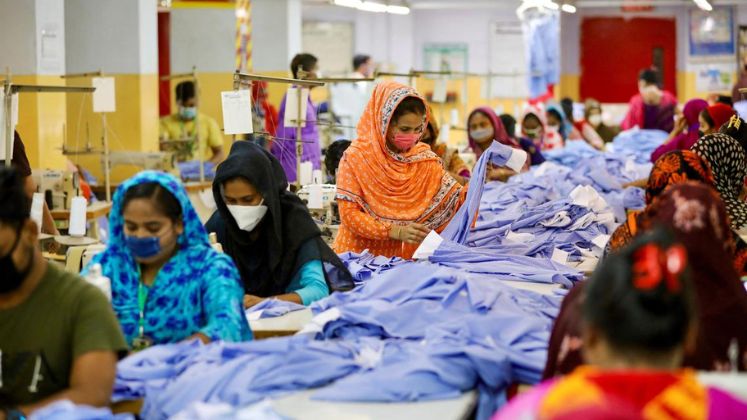
Owners of readymade garment (RMG) factories in Chittagong are expressing concern over the potential impact of a planned US tariff increase to 35%, set to take effect on 1st August. Many factory owners, who primarily do business with American buyers, are hopeful that Bangladesh’s government will negotiate to reduce the tariff, but if not, they warn that the sector’s future could be grim.
Currently, over 300 factories remain active in Chittagong, with around 200 directly engaged in export orders from buyers or brands, while others operate under subcontracting arrangements, according to industry associations such as the Bangladesh Garment Manufacturers and Exporters Association (BGMEA) and the Bangladesh Knitwear Manufacturers and Exporters Association (BKMEA).
While precise data on export volumes from Chattogram factories is scarce, industry insiders estimate that the region accounts for over 9% of Bangladesh’s total export earnings. In the fiscal year 2024-25, Bangladesh’s apparel exports reached US $ 39.34 billion, comprising approximately 81.5% of the country’s total exports of US $ 48.28 billion. Notably, over 19% of Bangladesh’s garment exports go to the US market, with many factories in Chittagong heavily reliant on American buyers.
Asian Apparels Group, which operates 18 garment factories in Chittagong, exports about 95% of its products to the US, totaling around US $ 300 million in 2024. Sakeef Ahmed Salam, Deputy Managing Director of the group, highlighted that factories in Chattogram are more US-dependent than those in Dhaka. He noted that US buyers have already asked factories to absorb a significant portion of the upcoming tariff hikes under ongoing negotiations, and some buyers are withholding purchase orders until the final tariff rates are confirmed. This delay hampers raw material procurement and production planning.
BGMEA Director SM Abu Tayyab emphasized the sector’s reliance on the US market, citing that his own factory, Independent Apparels Ltd, exported US $ 60 million worth of sportswear and kidswear last year, with 90% destined for the US. Tayyab warned that even a 30% tariff, short of the planned 35%, could threaten the survival of many factories. He suggested that a reduction to Vietnam’s 20% tariff rate would be necessary for Bangladeshi firms to remain competitive, cautioning that without such relief, US buyers might shift orders to Vietnam or India, where the sector has seen significant growth over the past decade.
Within Chattogram’s Export Processing Zone (CEPZ), most of the 60 RMG factories are also heavily dependent on the US market. Syed M Tanvir, managing director of Pacific Jeans Group, which operates eight factories in CEPZ, warned that the tariff hike would immediately impact the industry by making Bangladeshi garments approximately 35% more expensive. However, he emphasized the need to monitor the situation further before drawing definitive conclusions, considering other competing markets like India, Pakistan, Egypt, and Jordan.
Industry leaders agree that the upcoming tariff changes pose a significant challenge for Bangladesh’s RMG sector in Chattogram, underscoring the urgent need for bilateral negotiations to mitigate potential damage and sustain the industry’s competitiveness.






